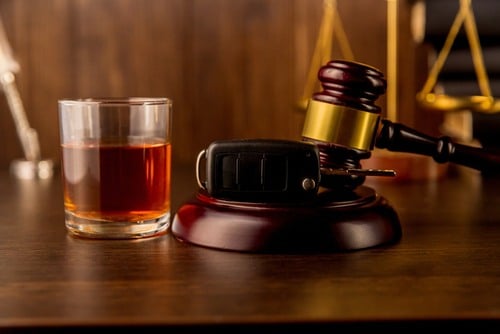
LPM Win for Client
Attorney Lisa Pierobon Mays WINS Workers Compensation Benefits for her Client at Hearing.
Mr. AH worked as a mechanic of heavy-duty equipment, repairing forklifts and excavators for over 4 years. In doing this job, he used his hands and arms constantly to lift, pull, push, grip, and grasp. He used heavy tools and handled parts up to 300 lbs. Often solo on the job, Mr. AH used his upper extremities, repetitively, in awkward positions and spaces. As the lead technician, he was considered by his employer as the guy who got the job done.
In 2020, Mr. AH started feeling increasing fatigue, pain, numbing, and radiating pain up his arms and down into the tips of his finger. The pain became unbearable, so he informed his employer of his symptoms. Mr. AH sought medical treatment. At first the workers compensation carrier accepted responsibility for AH’s injury occurring at work. Mr. AH underwent two carpal tunnel surgeries to his hands, but symptoms persisted to his forearms with pain radiating requiring ongoing restrictions and medical treatment.
Fearing higher financial exposure in Mr. AH’s workers compensation claim, the workers compensation insurance carrier sent AH to their Medical Examiner to conduct a Record Review to determine if the injury is work-related. A Record Review involves reviewing an injured workers medical record, without a personal examination, in order to make a medical determination. The Medical Examiner determined that the pain symptoms in AH’s forearms were not related to the work activity, and that Mr. AH suffered no disability to his hands despite undergoing carpal tunnel surgeries on both hands. This Adverse Examiner opined that the forearm pain developed in a degenerative type fashion that was personal to him which could occur even in the absence of significant exposure to high-force torquing and gripping activities.
Mr. AH sought out and hired Mays Law Office to fight for his denied workers compensation benefits. In doing so, Attorney Pierobon Mays went to work immediately and got a supporting medical report from AH’s Neurologist who assessed permanent physical restrictions and disability to Mr. AH’s hands and forearms. Attorney Pierobon Mays filed appeal paperwork with the Department of Workforce Development claiming that Mr. AH suffered a compensable occupational injury to both his hands and arms at the elbows. Attorney Pierobon Mays also made a claim for Retraining on behalf of AH as his date-of-injury employer terminated him due to the work injury. With permanent disability and physical restrictions to his hands and forearms, Mr. AH was unable to find comparable paying work and needed to be retrained in order to find comparable paying work.
As the date approached for the Hearing, Opposing Counsel expressed frustration in her client, the workers compensation insurance carrier, for extending no more than a minimal settlement offer leaving Mr. AH with no choice but to go to hearing. In pushing Mr. AH to a hearing, Attorney Lisa Pierobon Mays hit her opponent right back.
*Attorney Pierobon Mays refused to allow Mr. AH to attend a requested medical visit with the workers compensation carrier’s Medical Examiner because the deadline period had passed. This left Opposing Counsel with nothing more than an outdated Record Review Report that lacked a full analysis of all of Mr. AH’s medical treatment records. This record review was sorely lacking in credibility in contrast to the end-of-healing Report authored by Mr. AH’s Neurologist.
*Attorney Pierobon Mays also pointed out at hearing that even the workers compensation Medical Examiner agreed, in his albeit old Record Review Report, that the American Medical Association attributes injuries, like those to Mr. AH’s hand and forearms, from the kind of work that AH did for the employer;
*Attorney Pierobon Mays also illuminated multiple medical records that clearly explained Mr. AH’s pain symptoms that the workers compensation carrier missed in his analysis.
*Lastly, Attorney Lisa Pierobon Mays prepared Mr. AH well for the hearing where she elicited descriptive testimony from Mr. AH as to the intensity of his work exposure over a 3-year period from 2016 to 2020.
All this deflated opposing counsel who asked no more than 10 questions of Mr. AH on cross-examination, who was well-prepared for any hardball questions.
The Administrative Law Judge ruled in favor of Mr. AH finding that there was no dispute that he had significant exposure to repetitious high-force torquing and gripping activities during the course of his job duties with the employer. The Judge also found that the opinions of AH’s Neurologist were consistent with AH’s testimony and the medical evidence and credited his opinion on causation. In finding such, the Judge awarded Mr. AH benefits for permanent partial disability to both hands and elbows/forearms, all his lost time/wage benefits for missing work while on restrictions, and all his medical treatment and medical mileage. The issue of Retraining will be determined at a future hearing.
Attorney Lisa Pierobon Mays is very proud of the win that she achieved for her client, AH. Attorney Pierobon Mays will not force a settlement on her client’s that is not fair, justified, and well-based. In Mr. AH’s case, Attorney Lisa Pierobon Mays knew the strength of AH’s case and was confident in her abilities to win a favorable result for him at the administrative hearing. Attorney Lisa Pierobon Mays handles every single one of her workers compensation cases from the beginning paperwork through and to a hearing or settlement. Her clients are never shuffled to a paralegal to answer their questions. Consultations are free and calls usually returned the same day.
Mays Law Office has the coveted 5-star Google rating which is based on favorable reviews from actual clients. A rating like this is hard to achieve and only because the May Law Office attorneys get favorable results for their clients.



Recent Comments